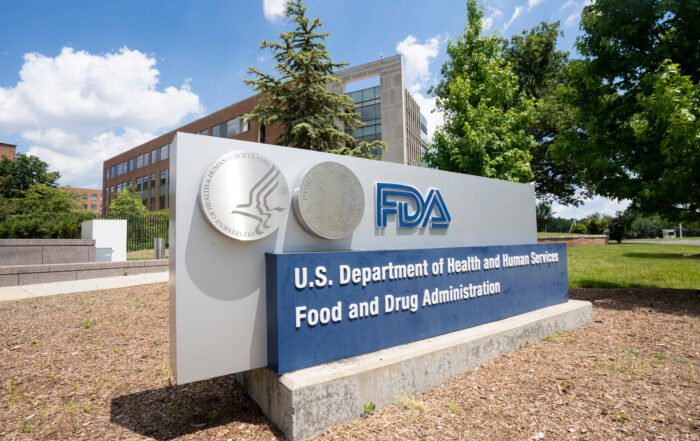
FTC and NAD Remind Industry of Their Authority Over All Health Product Advertising (Including Rx)
By Raqiyyah Pippins, Kasia Foster & Danait Mengist
Introduction
Many life sciences companies may be tempted to focus solely on the Food and Drug Administration’s (FDA) authority when marketing and promoting their health-related products and services. However, recent guidance and decisions from the Federal Trade Commission (FTC) and the National Advertising Division (NAD) of BBB National Programs are an important reminder that FDA is not the only player in this field. Companies should vet their marketing strategies with all three in mind.
In particular, FTC—which has long shared jurisdiction with FDA over the marketing of health-related products—recently issued an updated Health Products Compliance Guidance[1] describing the agency’s position with respect to evaluating whether a health-benefit claim is truthful and adequately substantiated. The guidance, along with other recent actions, particularly relating to digital health services, signal a clear intent by FTC to closely scrutinize health-related claims and products. Likewise, NAD’s recent decision involving a prescription drug product—the first such case in years—highlights that the self-regulatory body has broad jurisdiction to review health-benefit claims and intends to exercise that jurisdiction.
This article provides a brief overview of the recent guidance and decisions issued by FTC and NAD and outlines some key takeaways for companies promoting products with health-benefit claims to consider when marketing their products and services.
FTC’s Jurisdiction and Regulation of Health-Benefit Claims
FTC shares jurisdiction with FDA over the marketing of dietary supplements, foods, drugs, medical devices, and other health-related products. Pursuant to a Memorandum of Understanding[2] between the two agencies, FDA has primary responsibility over claims that appear on labeling, while FTC has primary responsibility for claims made in advertising. Both agencies require health-related marketing to be truthful and substantiated. Unlike FDA, however, FTC does not distinguish between categories of health-related products or claims in evaluating advertising claims. Rather, according to FTC, “the FTC’s approach to the advertising of health-related products is the same regardless of whether, under FDA law, the product is considered a food, a supplement[,] or a drug.”[3] Moreover, FTC has emphasized that the Memorandum of Understanding does not “limit the FTC’s jurisdiction or prohibit the agency from taking action against deceptive labeling claims or obtaining orders that address all forms of marketing, including claims that appear in labeling.”[4] In particular, FTC has been clear that the Memorandum of Understanding does not limit its jurisdiction or preclude the agency from taking action regarding prescription drug promotion.
As demonstrated through the recent issuance of its updated Health Products Compliance Guidance, FTC has made it clear that health-related products and claims will be closely scrutinized by the agency.[5] In addition to its focus on promotional claims, FTC has also signaled its heightened scrutiny of digital health products and services, particularly with respect to subscription-based models and “dark pattern” practices. An overview of these agency priorities is discussed below:
Health Products Compliance Guidance
On December 20, 2022, FTC issued its new Health Products Compliance Guide updating and replacing the agency’s prior 1998 guidance document, “Dietary Supplements: An Advertising Guide for Industry.” The new guidance, which has been expanded from applying solely to dietary supplements to applying to all health-related claims, addresses FTC’s position regarding how marketers can ensure that claims about the benefits and safety of health-related products are truthful, not misleading, and supported by science. The guidance does not have the force or effect of law; rather, FTC explains that the principles and examples provided in the guidance are “intended to help advertisers comply with the basic tenets of FTC law.”[6]
The guidance includes examples that cover a broad range of products, including conventional food, drugs, and medical devices, while also covering the diverse media through which health-related claims are communicated to consumers, including smartphone apps, social media, and other forms of online digital advertising. Most notably, the guidance expresses a quite rigorous substantiation standard for health-benefit claims that some may argue is inconsistent with the flexibility originally included in the “competent and reliable scientific evidence” standard, and reinforced by the courts in U.S. v. Bayer.[7]
A few key call-outs to advertisers in the guidance include the following:
- Identify and Substantiate Implied Claims—The guidance goes into detail regarding advertisers’ responsibility to substantiate both express and implied claims conveyed by its advertising. In discussing the legal obligation, however, FTC suggests advertisers may need to conduct consumer perception testing on advertising, preemptively, to confirm the messages conveyed by advertising. FTC also discusses the many ways in which implied claims can be conveyed in advertising, including by use of product names, before and after photos, or other imagery. Most notably, FTC explicitly takes the position that certain literally true claims, such as “cardiologist recommended” and “clinically tested” may convey broader messages such as that the “cardiologist recommended” product is also good for the heart or that the “clinically tested” product is proven by such test to provide specific benefits.
- Disclose Side Effects, Potential Drug Interaction, or Other “Material” Qualifying Information —It is well established that, under the FTC Act, an advertisement is misleading if it fails to disclose information that is material in light of the claims in the ad or with respect to how consumers customarily use the product.[8] In the Health Products Compliance Guidance, FTC takes this legal obligation further, taking the position that advertisers of a health product (including non-drug products) should be disclosing information regarding the side effects or contraindications for the product if: a) the product can result in “potentially serious risk” (such as a significant increase in blood pressure); b) is contraindicated with drug products; or c) is claimed to have fewer side effects than another product (or category of products). This is a step further than the traditional “use only as directed” approach taken for OTC products. FTC also takes the position that a company may need to disclose that products address a symptom (e.g., snoring) that is often associated with a disease (e.g., sleep apnea) should disclose that their anti–snoring product does not treat the disease.
- Ensure Clear and Conspicuous Disclosure—Where disclosure of qualifying information is necessary, FTC requires such disclosure to be presented clearly and conspicuously, so “it is difficult to miss (i.e., noticeable) and easily understandable by ordinary consumers.”[9] Importantly, if the claim that requires disclosure is made both visually and audibly, then the disclosure must likewise be made both visually and audibly. FTC particularly notes that in social media, the internet, and other interactive media, the disclosure should be unavoidable and that the agency considers hyperlinks to be avoidable.
- Understand RCT’s are “Typically” Required as Substantiation—The FTC guidance puts forth a rigorous substantiation standard for health-related claims. The guidance references the Pfizer factors[10] and the “competent and reliable scientific evidence” standard—which is defined as “tests, analyses, research, or studies that (1) have been conducted and evaluated in an objective manner by experts in the relevant disease, condition, or function to which the representation relates; and (2) are generally accepted in the profession to yield accurate and reliable results.”[11] FTC, however, then goes on to state that health-related claims will typically need to be substantiated through randomized controlled human clinical testing (RCT). The agency also takes the position that, while potentially valuable to show an association between a product and benefit, neither epidemiological (or observational) studies, animal studies, nor in vitro studies are sufficient to substantiate health-related claims without confirmation from human RCTs.
Notably, FTC’s new RCT standard is inconsistent with the flexibility included in the formal definition of competent and reliable scientific evidence, as it fails to acknowledge other “tests, analyses, and research” and can also be “generally accepted in the profession to yield accurate and reliable results” regarding a product’s (or product component’s) efficacy. As noted above, this inconsistency also contradicts the holding in United States v. Bayer Corp., No. CV 07-01(JLL), 2015 WL 5822595 (D.N.J. Sept. 24, 2015). In Bayer, the court rejected the government’s position that Bayer needed to support its health-related claims using RCTs explaining that this standard “is inconsistent with the agency’s own guidance.” Id. at *14. The court further noted that, in FTC’s guidance, the agency had indicated that “[t]here is no fixed formula for the number or type of studies required” under the competent and reliable scientific evidence standard; thus, the agency could not “enter into a consent decree using the general competent and reliable scientific evidence standard and then subsequently require RCTs.” Id. at *14–15 (internal quotation marks and citations omitted).
- Monitor the Quality of the Evidence—Additionally, FTC discusses that it will also examine the internal validity of each piece of evidence provided to support a health claim. FTC advises marketers to ensure the research on which they rely complies with the following basic principles:
- The human clinical trial should have both a treatment group and a control group;
- The study should be randomized;
- The study should be double blinded;
- The study should yield statistically significant results; and
- The statistically significant results should translate to a benefit that is clinically meaningful.
FTC also emphasizes that research intended to support a claim “should begin with a clear and defined protocol,” and subsequently details the elements of claim support that FTC believes evidence the results of such research is “clinically meaningful.”[12] Key elements include pre-disclosed primary and secondary endpoints, submission of the research protocol to an Institutional Review Board, an intent-to-treat analysis, sufficient duration to ensure any touted benefits will persist, and a study write-up that contains “sufficient detail to assess what actually took place.”[13]
In addition to the watch-outs flagged above, the guidance also discusses: 1) FTC’s expectation that any health-benefit claims communicated through consumer testimonials or expert endorsements be substantiated in accordance with the agency’s rigorous standard; 2) FTC’s position that FDA-mandated disclaimers, such as the DSHEA disclaimer for dietary supplements, do not cure an otherwise misleading health-benefit claim; and 3) FTC’s position that third-party literature and publications may come under the purview of FTC’s jurisdiction if they are being used by a marketer to promote its product.
FTC’s Focus on Subscription-Based Models and “Dark Patterns”
As subscription-based models and auto-renewal programs become increasingly popular across industries, including health, FTC has also focused its enforcement activity on companies engaging in alleged deceptive or unfair conduct. In September 2022, the agency published a report describing how companies are using sophisticated design practices known as “dark patterns” that trick or manipulate consumers into buying products or services.[14] The report reflects FTC’s intent to make dark patterns a key enforcement priority with a heightened focus on auto-renewal programs, including for health-related products. For example, FTC has initiated an investigation into Cerebral Inc., a subscription-based mental health startup, regarding the company’s advertising and marketing of mental health services, including its use of negative option programs (i.e., continuing to bill customers a subscription fee until the customer cancels). Most recently in January 2023, the agency returned payments totaling $973,000 to consumers who the agency alleges lost money after a digital health company enrolled them in unwanted membership programs for supplements and beauty products.[15] The Restore Online Shoppers’ Confidence Act (ROSCA) provides FTC the authority to pursue civil penalties against companies for charging junk fees or making cancellation of services difficult, and FTC has issued an enforcement policy statement based on the statute, warning companies against using illegal practices when developing subscription services.
NAD’s Role
NAD also plays an active role in assessing the veracity of health-related advertising and promotional strategies. NAD gives great deference to FTC guidance and precedent, potentially extending the reach of FTC’s Health Products Compliance Guidance and related priorities to competitor challenges. Established by the advertising industry in 1971 “as an independent system of self-regulation designed to build consumer trust in advertising,”[16] NAD reviews challenges to advertising brought by consumers, businesses (including competitors), trade associations, or NAD itself.[17]
While participation in the self-regulatory process is voluntary, if an advertiser refuses to participate in the process or refuses to comply with NAD’s recommendations, NAD will refer the matter to the appropriate regulatory agency, including FTC and FDA. NAD is still working to strengthen its relationship with FDA; however, FTC prioritizes NAD referrals and publishes how they are handled by FTC on the FTC website.
Notably, while NAD has a long history of reviewing cases involving FDA-regulated health products such as over-the-counter drugs and devices, and animal drugs, NAD has made clear its jurisdiction and interest in reviewing cases involving prescription drugs as well. For example, at last year’s FDLI Enforcement, Litigation, and Compliance Conference, an NAD attorney noted NAD’s jurisdiction over such advertising and that NAD “will take any prescription drug cases you want to bring.”[18] Not long after, NAD heard its first prescription drug case in years. The most recent prior prescription drug case was in 2017.
NAD’s recent prescription drug case signals the re-emerging interest of companies in using NAD to challenge prescription drug advertising, in addition to its review of advertising for consumer health products.
It also reflects expanding use of NAD to address consumer health products generally. At NAD’s 2022 annual conference, NAD shared that, out of 102 cases over the past 12 months, a substantial number of the NAD cases involved drugs (14 cases), food and beverages (12 cases), dietary supplements (10 cases), and household products (10 cases). In the consumer health space, NAD evaluated a broad range of advertising claims and issues, including doctor-recommended claims, use of endorsements and testimonials, consumer surveys, comparative performance claims, disclosures, disparagement claims, efficacy claims, environmental claims, establishment claims, exclusivity claims, pricing claims, and superiority claims.
NAD can also bring its own case and, as announced at NAD’s 2022 annual conference,[19] NAD has especially been focusing on advertising disputes related to sufficiency of disclosures, online rankings and reviews, social media claims, #1 claims, claims touting third-party awards and certifications, alleged puffery claims, and a new policy to focus on harmful and misleading stereotyping in national advertising.
NAD’s substantiation standards align with those of FTC, and NAD is often deferential to FTC guidance. Like FTC, NAD does not assess compliance with the Federal Food, Drug, and Cosmetic Act (e.g., whether or not a product is misbranded, is an unapproved new drug, or is promoted off-label). Instead, NAD focuses on whether there is a reasonable basis—or in the case of a health-benefit claim, competent and reliable scientific evidence—to support the claim. When there is an applicable federal regulation or a federal agency action that directly relates to the product or claim before NAD, NAD will attempt to harmonize its efforts with those of the appropriate regulatory agency. However, NAD’s primary focus is on whether the claim is truthful, non-misleading, and substantiated (i.e., supported by a reasonable basis). Against this backdrop, it is increasingly important for companies to review advertising strategies both with consideration of FTC standards and the potential for an NAD challenge in mind.
Key Takeaways
The recent FTC and NAD activity provides a great opportunity for pharmaceutical companies to reconsider their marketing strategies to give greater weight to FTC guidance and priorities in conjunction with any FDA regulatory compliance review. NAD’s recent case involving prescription drug advertising and the FTC’s Health Products Compliance Guidance cannot be viewed in a vacuum. This activity comes on the heels of prior reminders by FTC of its broad jurisdiction over health-product advertising, including FTC’s October 2021 notice[20] to several pharmaceutical companies regarding FTC’s position on unfair and deceptive endorsements and testimonials, and the inclusion of several health-related examples in FTC’s subsequent May 2022 proposed updates to its Guides Concerning the Use of Endorsements and Testimonials in Advertising.[21]
Given the strong relationship between NAD and FTC, it is reasonable to expect increased scrutiny by competitors of health-product advertising potentially applying FTC’s new rigorous standards as well. Thus, it is prudent for companies to review their health-benefit claim-related marketing strategies with the FDA, FTC, and NAD in mind.
[1] Available at https://www.ftc.gov/system/files/ftc_gov/pdf/Health-Products-Compliance-Guidance.pdf.
[2] Memorandum of Understanding Between the Federal Trade Commission and the Food and Drug Administration. Available at: https://www.ftc.gov/legal-library/browse/cooperation-agreements/memorandum-understanding-between-federal-trade-commission-food-drug-administration.
[3] FTC Health Products Compliance Guidance (hereafter “Health Products Compliance Guidance”) at 4. Available at https://www.ftc.gov/system/files/ftc_gov/pdf/Health-Products-Compliance-Guidance.pdf.
[4] Health Products Compliance Guidance at 3.
[5] Id. at 1.
[6] Id.
[7] United States v. Bayer Corp., No. CV 07-01(JLL), 2015 WL 5822595 (D.N.J. Sept. 24, 2015).
[8] Health Products Compliance Guidance at 7.
[9] Id. at 8.
[10] Specifically, that the amount and type of substantiation required can vary depending on factors such as the type of product, type of claim, benefits of the claim, cost of developing substantiation, and consequences of a false claim.
[11] Health Products Compliance Guidance at 12. FTC also requires that the research be “sufficient in quality and quantity based on standards generally accepted in the relevant scientific fields, when considered in light of the entire body of relevant and reliable scientific evidence, to substantiate that the representation is true.”
[12] Health Products Compliance Guidance at 17.
[13] Id. at 17–18.
[14] FTC Bringing Dark Patterns to Light, Sept. 2022. Available at https://www.ftc.gov/system/files/ftc_gov/pdf/P214800%20Dark%20Patterns%20Report%209.14.2022%20-%20FINAL.pdf.
[15] “FTC Returns More Than $973,000 to Consumers Charged by NutraClick LLC for Unwanted Monthly Subscriptions for Supplements and Beauty Products.” Available at https://www.ftc.gov/news-events/news/press-releases/2023/01/ftc-returns-more-973000-consumers-charged-nutraclick-llc-unwanted-monthly-subscriptions-supplements?utm_source=govdelivery.
[16] NAD is a unit of the independent, nonprofit organization, BBB National Programs. BBB National Programs is not a government entity, nor is it affiliated with a government agency.
[17] NAD initiates approximately 20–25% of its cases each year based on its own monitoring of advertising in a wide variety of product categories. NAD opens monitoring cases when advertising targets a vulnerable population, capitalizes on consumer fears or misunderstanding, fills a gap in regulatory efforts of FTC or states, addresses novel issues, concerns claims consumers cannot evaluate, or achieves diversity among industries that historically participate in self-regulation.
[18] Zheng Wang, Attorney at National Advertising Division, “Recent Trends in Enforcement and Practical Examples to Ensure Compliance” Panel, FDLI Advertising & Promotion for Medical Products Conference (Oct. 13–14, 2022).
[19] NAD 2022 Annual Conference Held Sept. 19–20, 2022. Program available at: https://bbbprograms.org/programs/nad/conference2022.
[20] FTC Notice of Penalty Offenses Concerning Deceptive or Unfair Conduct Around Endorsements and Testimonials. Available at https://www.ftc.gov/enforcement/notices-penalty-offenses/penalty-offenses-concerning-endorsements.
[21] Proposed Rule re Revisions to the Guides Concerning the Use of Endorsements and Testimonials in Advertising. Available at https://www.federalregister.gov/documents/2022/07/26/2022-12327/guides-concerning-the-use-of-endorsements-and-testimonials-in-advertising.
Update Magazine
Spring 2023

 RAQIYYAH PIPPINS is a partner at Arnold & Porter’s Washington, DC office. Pippins co-leads the firm’s Consumer Products Practice Group and the Consumer Products & Retail Industry Team and has extensive experience representing companies that are engaged in the development, marketing, import, and export of consumer products, including FDA-regulated consumer products, apparel, appliances, and devices. Pippins focuses her practice in the areas of FDA’s regulation of food, dietary supplement, cosmetic, drug, and medical-device products sold directly to consumers as well as FTC and state regulation of the marketing and sale of consumer products.
RAQIYYAH PIPPINS is a partner at Arnold & Porter’s Washington, DC office. Pippins co-leads the firm’s Consumer Products Practice Group and the Consumer Products & Retail Industry Team and has extensive experience representing companies that are engaged in the development, marketing, import, and export of consumer products, including FDA-regulated consumer products, apparel, appliances, and devices. Pippins focuses her practice in the areas of FDA’s regulation of food, dietary supplement, cosmetic, drug, and medical-device products sold directly to consumers as well as FTC and state regulation of the marketing and sale of consumer products. KASIA FOSTER is an associate at Arnold & Porter’s Washington, DC office. Foster counsels life sciences, food, cosmetics companies, and healthcare providers on regulatory, compliance, transactional, and public policy matters. Foster advises on issues related to FDA regulation of drugs, devices, biologics, food, and cosmetics; compliance with FDA and FTC requirements for consumer product and claims development; and fraud and abuse issues. As part of her practice, Foster conducts regulatory-based diligence reviews and internal compliance investigations. She also maintains an active pro bono practice.
KASIA FOSTER is an associate at Arnold & Porter’s Washington, DC office. Foster counsels life sciences, food, cosmetics companies, and healthcare providers on regulatory, compliance, transactional, and public policy matters. Foster advises on issues related to FDA regulation of drugs, devices, biologics, food, and cosmetics; compliance with FDA and FTC requirements for consumer product and claims development; and fraud and abuse issues. As part of her practice, Foster conducts regulatory-based diligence reviews and internal compliance investigations. She also maintains an active pro bono practice. DANAIT MENGIST is an associate at Arnold & Porter’s Washington, DC office. Mengist focuses on FTC and state regulation of the marketing and sale of consumer products and regularly counsels food, cosmetic, and consumer products companies on issues related to advertising and marketing claims, and provides guidance regarding FDA, FTC, NAD, and litigation considerations and risks. Mengist also has experience litigating environmental matters, including pretrial and trial work. Mengist maintains an active pro bono practice focusing on immigration matters, including representing a client in defensive asylum proceedings.
DANAIT MENGIST is an associate at Arnold & Porter’s Washington, DC office. Mengist focuses on FTC and state regulation of the marketing and sale of consumer products and regularly counsels food, cosmetic, and consumer products companies on issues related to advertising and marketing claims, and provides guidance regarding FDA, FTC, NAD, and litigation considerations and risks. Mengist also has experience litigating environmental matters, including pretrial and trial work. Mengist maintains an active pro bono practice focusing on immigration matters, including representing a client in defensive asylum proceedings.





